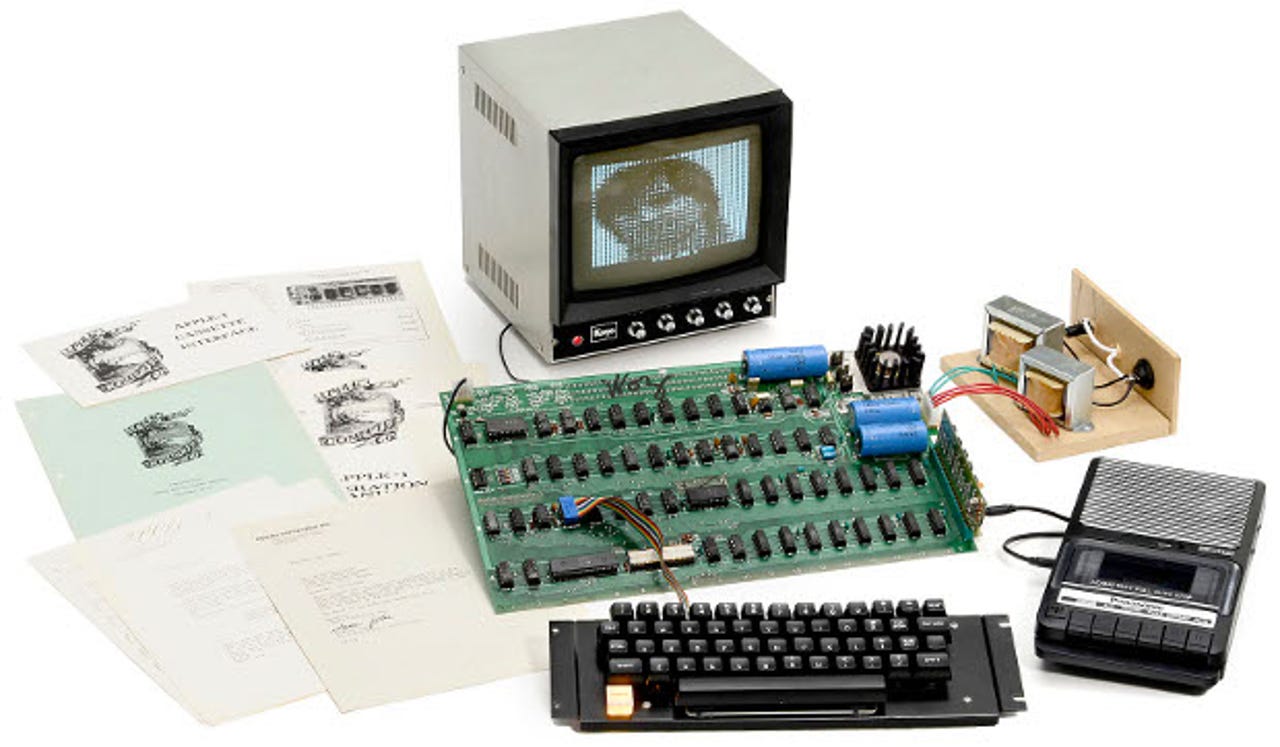Apple I to be sold in auction of historic computers

Some of the world's earliest personal computers – including the iconic Apple I - are to be auctioned in Germany.
The Apple I machine, one of six working Apple I computers in the world according to auctioneers, will be sold by Auction Team Breker of Cologne, Germany on 25 May.
The Apple I was the company's first machine and was hand built by Steve Wozniak in a garage in 1975/76 when Apple was a three-man company. The Apple I featured a 1MHz processor and 4KB of memory and went on sale for $666.66 in 1976. It was sold as a fully assembled circuit board, with owners having to add the case, power supply, keyboard and display. Breker expect the Apple I to sell for between €200,000 and €300,000 ($260,000 - $400,000).

An Apple Lisa-I PC, one of the first computers to feature a graphical user interface when it was released in 1983, will also go on sale for €15,000 to €30,000 ($20,000 - $40,000).
Busicom 141-PF calculator
Another historic device on sale will be a Busicom 141-PF calculator, the machine for which Intel designed the first microprocessor, the Intel 4004.
At the time of its release in 1971 other electronic calculators relied on multiple logic chips to work. The Busicom was able to carry out the same work using a single microprocessor that received instructions from onboard RAM and ROM. The Intel 4004 microprocessor was not very powerful – only able to process four bits of data and carry out 60,000 operations a second – but Intel would soon go on to develop a microprocessors that would power the first personal computer and help launch the modern information age.
The Busicom is expected to sell for between €8,000 and €12,000 ($10,000 to 15,000).
Altair 8800
An Altair 8800, the machine sometimes described as the first personal computer, will also feature among the lots.
The machine was released in 1975 as a kit, meaning users had to build the machine by slotting together its circuit boards. Programming the Altair as it initially sold was a painstaking affair, requiring users to flip switches on the front of the machine to input instructions in machine code. The Altair originally had no display, and instead lights would flash to let users know the outcome of programs on the machine.
The Altair came with the then new eight bit 2MHz Intel 8080 microprocessor and had a memory of just 256-bytes, and sold in its thousands. At auction the Altair is expected to sell for between €3,000 and €5,000 ($4,000 - $7,000).
Another early kit computer on sale will be 1973 Scelbi-8H, which was built around Intel's first eight-bit microprocessor the 8008. The machine is expected to sell for between €15,000 and €20,000 ($20,000 – 25,000).
Pascaline
In 1642, more than three hundred years before the birth of Steve Jobs and Steve Wozniak, French mathematician Blaise Pascal created the Pascaline, the first mechanical calculator to come to the public's attention.
The calculator was designed to add and subtract up to eight digit numbers using geared mechanisms. Using the device required users to rotate dials on the top of the Pascaline to enter numbers and to read the sum of those numbers from windows on its surface. Multiplication and division were also possible using by repeating addition and subtraction respectively.
Subtraction required the nines' complement method, which allows subtraction to be carried out via addition. A complement method is used by modern computer processors to manipulate binary numbers.
A working model of the Pascaline from the 1920s will go on sale for an estimated €25,000 to €40,000 ($30,000 to $50,000).
Other historical items include an Enigma coding machine, the device used by the Nazis to protect their communications during the Second World War, expected to sell for between €15,000 and €25,000 ($20,000 – 33,000) and the Marchande des Masques automaton by Gustave Vichy, expected to sell for between €30,000 and €50,000 ($40,000 – 65,000).
More information about the lots is available via Breker's website.